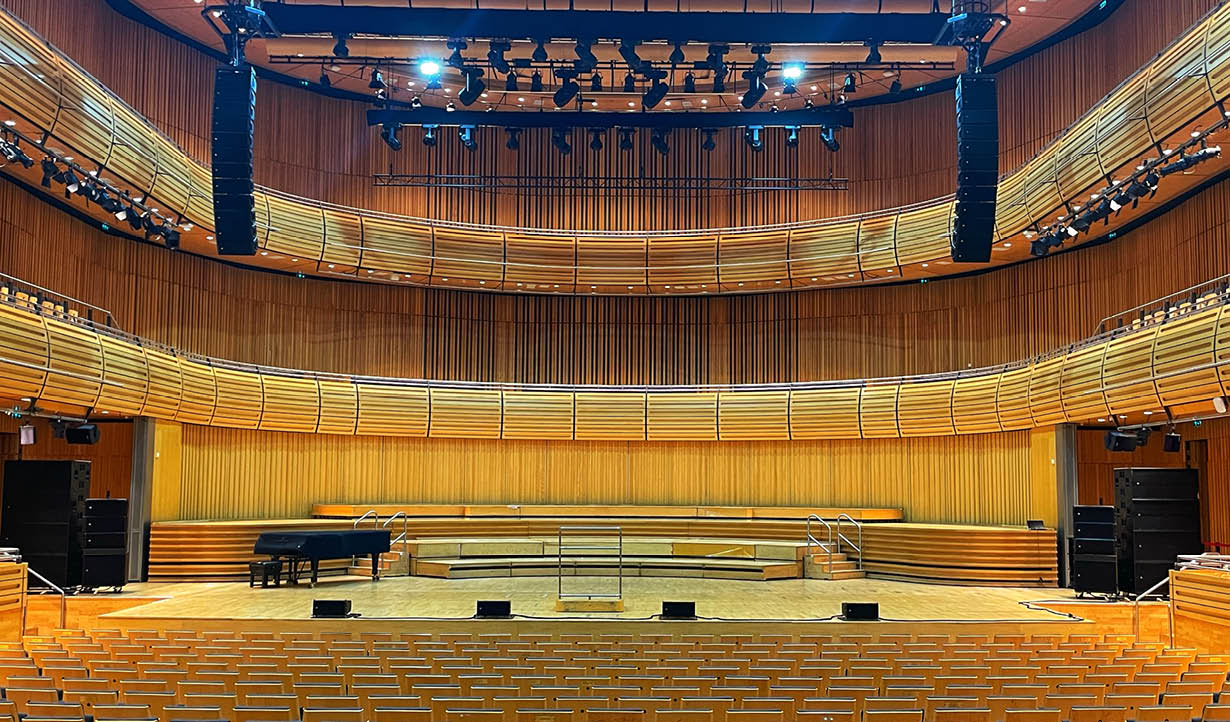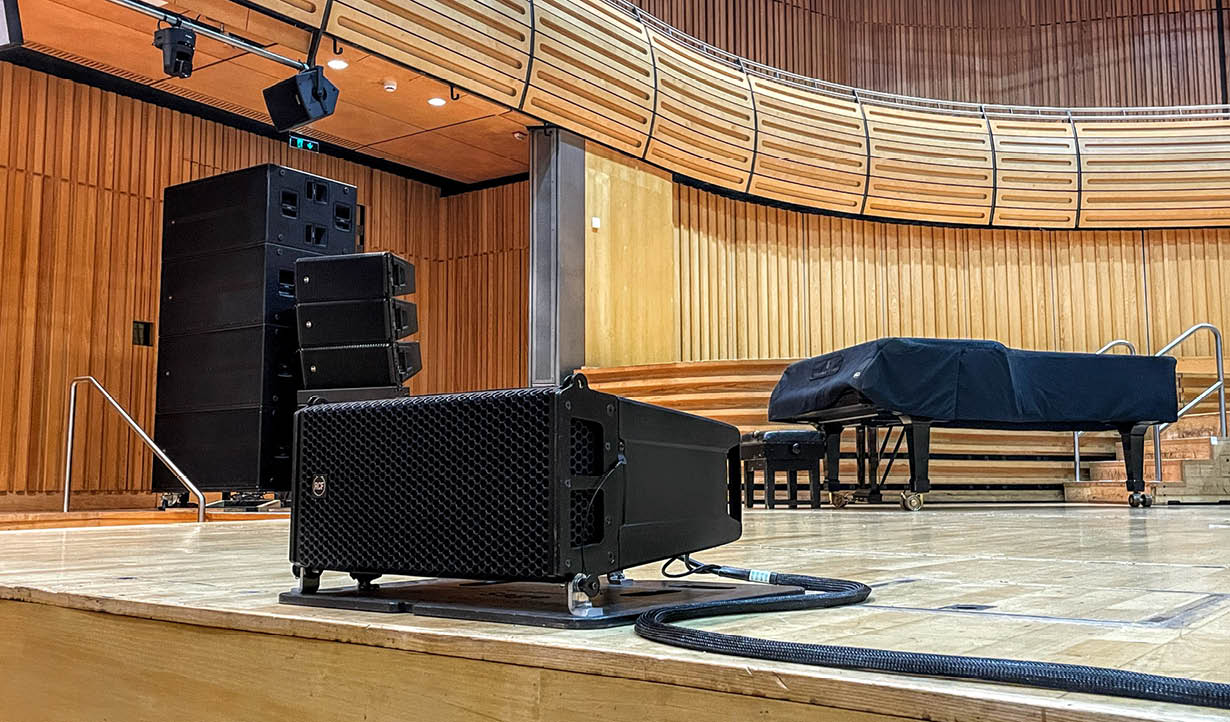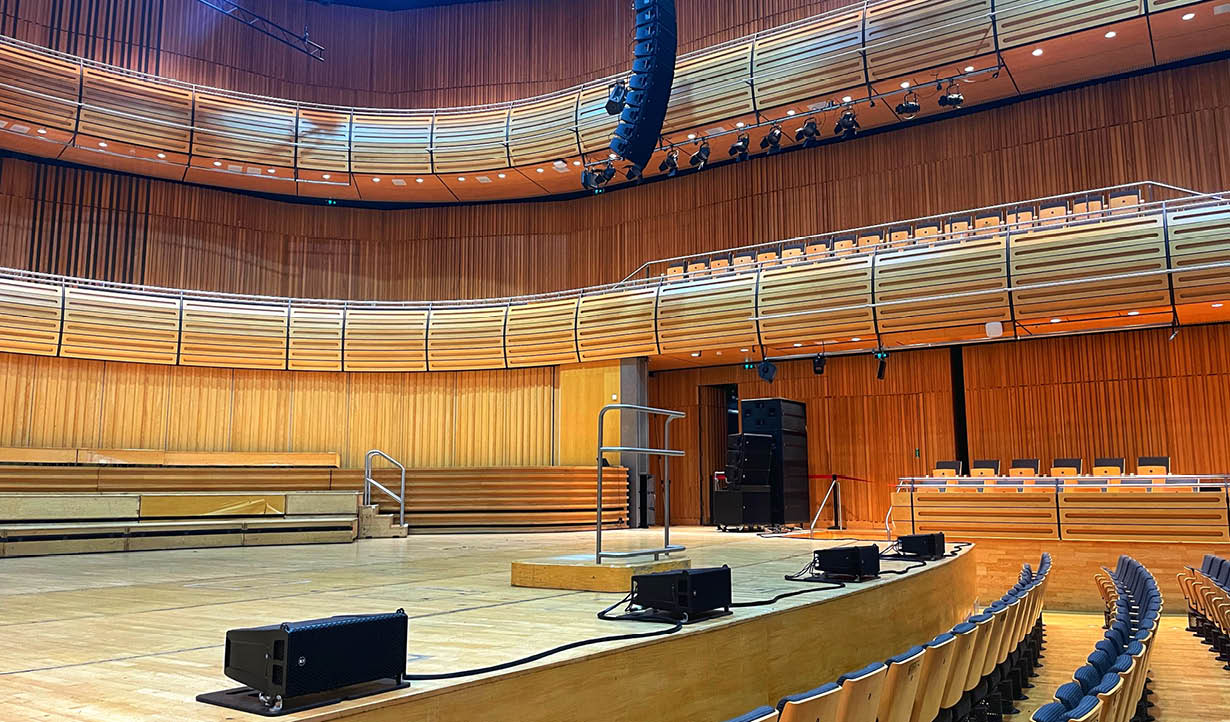Sage Gateshead upgrades main auditorium with RCF HDL 30-A and SUB 9006-AS
Sage Gateshead upgrades main auditorium with RCF HDL 30-A and SUB 9006-AS





Sage Gateshead’s multi-venue complex has long standardised on RCF systems throughout its venue in the north-east of England, overlooking the River Tyne. But when room configurations suddenly change, often the PA needs to be sufficiently nimble to adapt with it.
In the case of the concert hall’s premier auditorium, Sage One, it has required a complete overhaul in response to the removal of its stalls seating in certain settings. This has seen its trusty RCF HDL 20-A line array now replaced by a beefier HDL 30-A, along with a revision of its subwoofer design which now comprises 10 SUB 9006-AS. All inventory was supplied by Ingram AV.
However, it was never a given that this upgrade would remain within the RCF environment—in fact it attracted interest from several competitors. It was largely the long historic relationship enjoyed with the venue by RCF UK sales manager, Mick Butler, that won the day for the Italian manufacturer.
The venue’s technical manager, Graham Orchard explains how the capital project to change the functionality of the hall seating came about and how it impacted the PA.
“The original seating was never designed to be removed,” he admits. “We’d only ever done a standing event once, for the BBC 6 Music Festival in 2015. It was a major job, and it damaged the inserts they were screwed into. The aim of the capital project was to change the release mechanism so the seating could be easily removed and in less time.”
At the same time Sage Gateshead knew that if they wished to stage events of a standing nature they would need to address the PA system. A standing gig would deliver a different type of audience experience, while increasing the capacity in the stalls significantly.
With long experience of both the venue and HDL characteristics through his previous company, Andy Magee, from RCF Engineering Support Group, had already recorded numerous measurements for different scenarios (e.g. with the stage extended). He had spent a week with 24 reference mics scattered round the hall and consequently advised on the new set-up, which included fill speakers from RCF’s TT range—with the entire system now controlled and networked through RCF’s proprietary RDNet.
In the new set-up, L/R hangs of 12 active 2 x 10” HDL 30-A line array enclosures pick up the coverage from row F at stalls level, and extend up to balcony levels 2 and 3, while a ground stack of three further HDL 30-A and single RCF SUB 9004-AS per side provide audience coverage in the first four rows. Four HDL 26-A across the front of the stage provide lip fills while two TT 10-A provide outfill coverage at stalls level and a further four TT 10-A perform the same task at the balcony levels.
Explaining in more detail, Graham Orchard says, “The group of two TT 10 hangs cover the boxes on either side each of which hold eight seats. The other four, flown off the PA, are aimed at balcony level 2 and level 3.”
But while the operators wrestled with the inherent problems of raked and curved contouring—and the consequent building of new flat platforms for the FOH control position—it was the deployment of the subwoofers that was causing the greatest amount of consternation for Magee and Orchard. Initially they placed three SUB 9006-AS per side in cardioid configuration and that was later increased to four. However, the cardioid was subsequently removed because of the contours of the hall—and an agreement by the two men that it sounded better without.
“The rejection we were getting from the cardioid wasn’t that significant,” Graham Orchard admits. “Ideally, we would have the subs under the stage in a linear pattern; but that was impossible, since the stage is on a lift, and so the subs have to be ground stacked. They also have to be set wide off the stage, because of sightline issues.”
As a precaution, Sage Gateshead has added two further SUB 9006-AS more as utilities, for while they can be used to bolster the existing artillery as necessary in the main auditorium they can also transport on dollies to another space and be used with the house HDL6’s.
Control of course is equally vital and with the move to HDL 30-A Andy Magee has now integrated RDNet and the RCF software to give greater capabilities. While the system itself was tuned and time aligned using RDNet, the control tablet gives engineers access to trim and adjust the EQ of all zones via the custom BSS Soundweb platform.
Vitally, through the control panel there are now various settings for stage reduction, standard stage extension and full stage extension (affecting delays) mainly enabled through RDNet.
But as big an achievement as this elegant integration is, the need for the HDL 30-A to be compatible with classical concert hall requirements, was paramount—particularly since Sage Gateshead is home to its orchestra, Royal Northern Sinfonia. Hence, the venue worked with RCF to create a custom preset in RDNet that optimised the performance, ensuring the venue’s low existing noise floor wasn’t exceeded in any way.
The final pieces in the jigsaw were budget compliance and visual continuity. “Having something that didn’t completely change the visual representation of the boxes in the hall was a key factor. [Sage One] is a shoebox configuration so with the footprint hanging in the air and on the stage, simply switching from HDL 20-A to HDL 30-A was a great benefit.” And in addition to the visual continuity, it made little difference in terms of processing.
